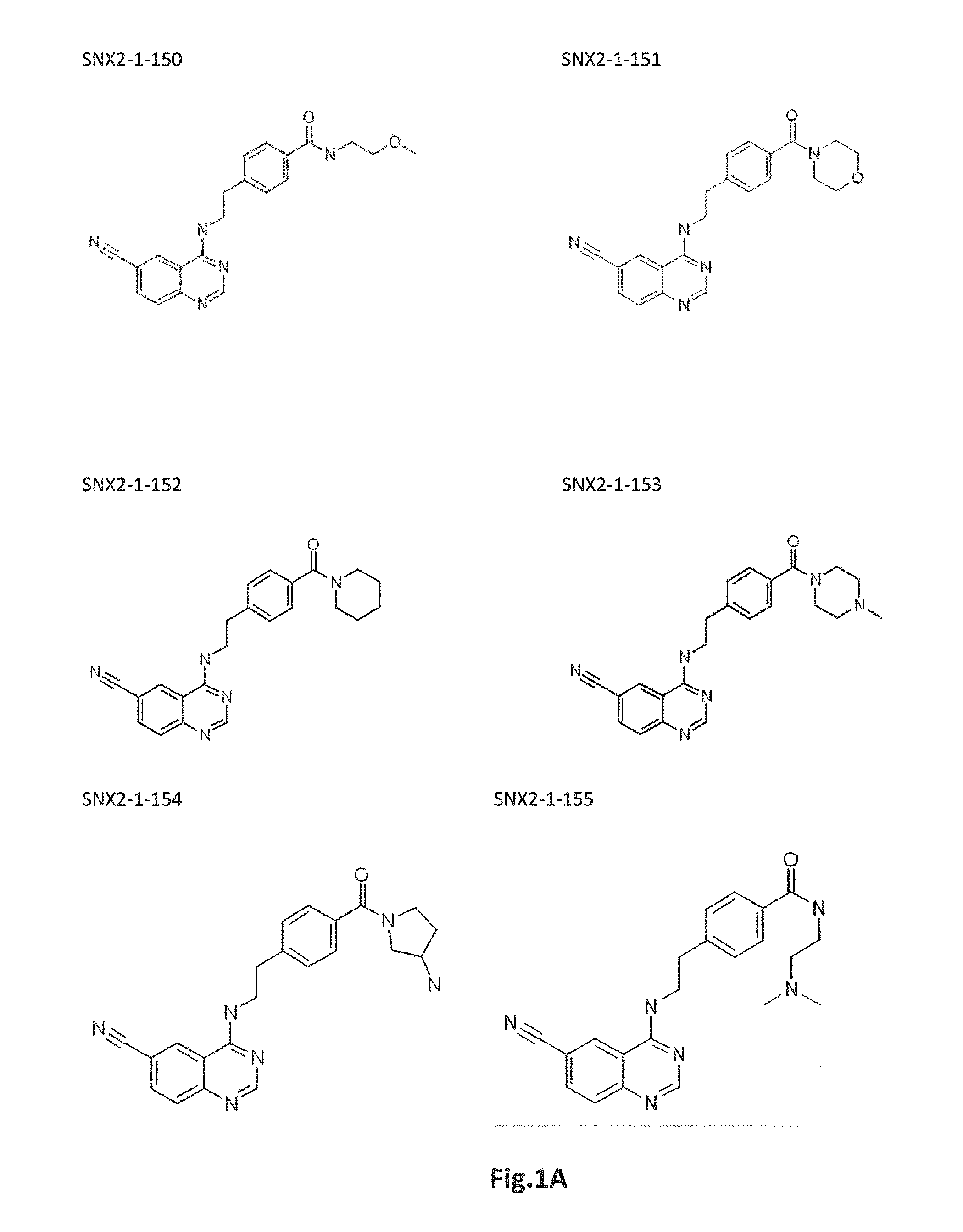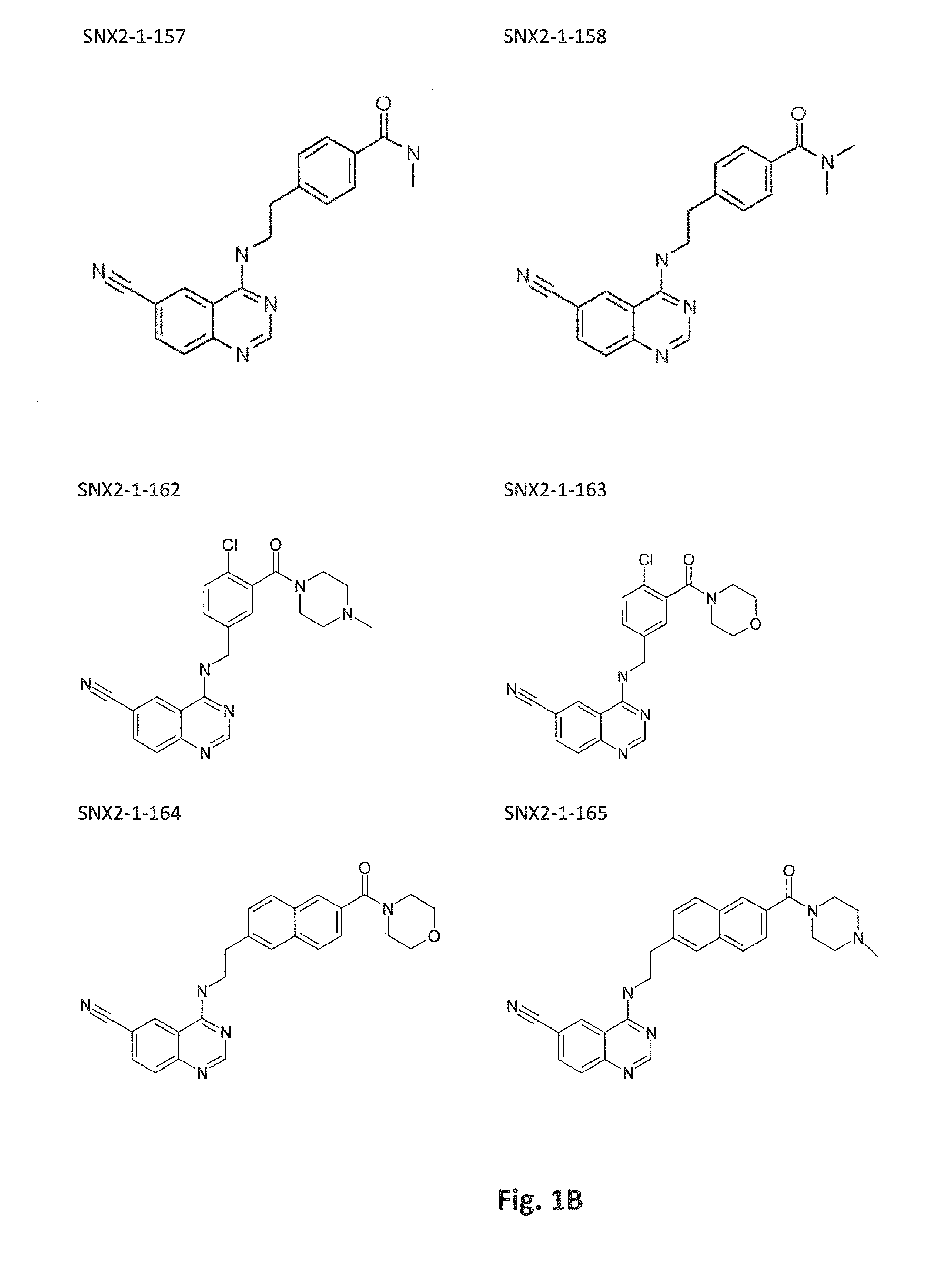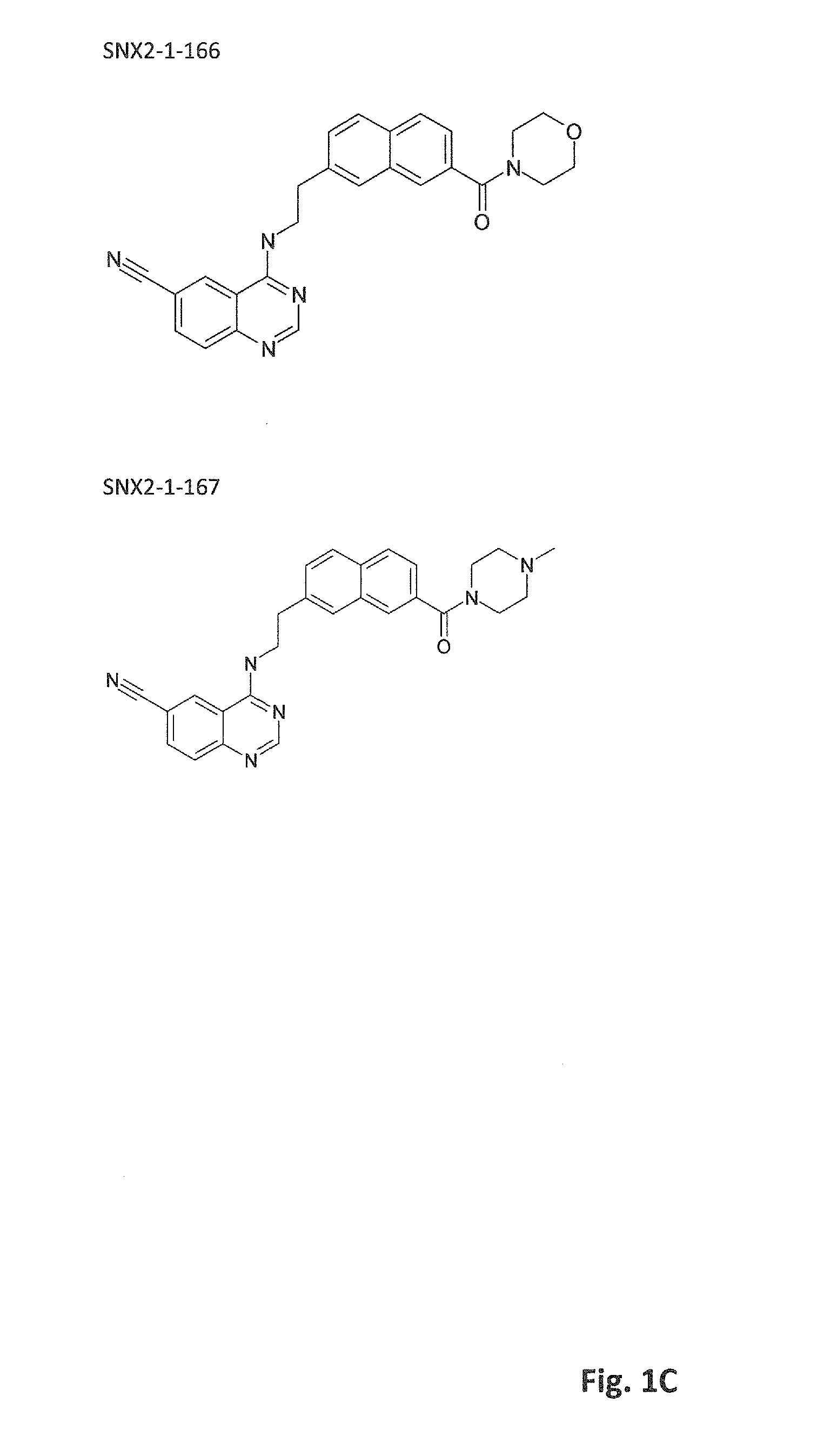Inhibitors of cdk8/19 for use in treating estrogen receptor positive breast cancer
a technology of estrogen receptor and inhibitor, which is applied in the field of treatment of estrogen receptor positive (er +) breast cancer, can solve the problems of invariably limited efficacy of rtk inhibitors, and achieve the effects of blocking estrogen production, inhibiting dimerization and downregulating er, and preventing recurren
- Summary
- Abstract
- Description
- Claims
- Application Information
AI Technical Summary
Benefits of technology
Problems solved by technology
Method used
Image
Examples
example 1
CDK8 / 19 Inhibition Inhibits Mitogenic Effect of Estrogen in ER+ Breast Cancer Cells
[0023]To test the effect of CDK8 / 19 inhibition on the mitogenic effect of estrogen in estrogen-responsive BrCa cells, MCF7 cells (ER+BrCa line) were placed into estrogen-depleted phenol red-free media with 10% charcoal-stripped serum. Under these conditions cells are largely but not completely estrogen-depleted (full depletion would require adapting the cells to low serum, since the cells can synthesize estrogen from serum components). Cells were then plated in the presence or absence of Senexin A (at 1 μM and 5 μM concentrations), and either 10 nM of the estrogen 17-β-estradiol (E2) or vehicle control were added on the following day. Cell growth was measured by flow cytometric counting of live (PI-negative) and dead (PI-positive) cells over 4 days. As shown in FIG. 3, E2 strongly stimulated cell growth, but this effect was abolished with 5 μM Senexin A (1 μM Senexin A produced a partial effect). 5 μM...
example 2
CDK8 / 19 Inhibition Inhibits the Growth of ER+ Breast Cancer Cells and Potentiates the Effects of Antiestrogen Drugs
[0024]The effect of Senexin A on mitogenic response to E2 suggested that CDK8 / 19 inhibitors could inhibit the growth of estrogen-dependent BrCa cells in regular (estrogen-containing) media, in contrast to the inhibitor's lack of growth inhibition in most other cell types, and that they may also potentiate the effects of antiestrogen drugs in both estrogen-dependent and estrogen-independent ER+ cell lines. Table 1 shows the growth-inhibitory effects of Senexin A alone (tested at 5 μM) and in combinations with a SERD (fulvestrant) and a SERM (tamoxifen) in MCF7 and T47D (ER+HER2−) and BT474 (ER+HER2+, fulvestrant-resistant) cell lines, and in two derivatives of MCF7, MCF7-Veh and MCF7-1pE, selected by long-term growth in estrogen-depleted media and in media supplemented with a very low (1 pM) concentration of E2, respectively (Sikora et al., 2012). Both MCF7-1pE and MCF7-...
example 3
CDK8 / 19 Inhibition has a Synergistic Effect with HER2 / Neu Inhibition in ER+HER2+ Breast Cancer
[0027]It is known that HER2 / Neu overexpression or gene amplification contributes to de novo and acquired resistance to endocrine therapies and that resistance to HER2-targeting agents can be conferred by the upregulation of ER (Wang et al., 2011 and references therein). Since we have found that CDK8 / 19 inhibition inhibits ER-mediated mitogenic signaling, we hypothesized that CDK8 / 19 inhibitors could have a synergistic effect with HER2-targeting drugs in ER+HER2+ breast cancer cells. In the experiment in FIG. 6, we have investigated the interaction between Senexin A and lapatinib, a small-molecule inhibitor of HER2 and EGFR, in ER+HER2+BT474 cell line. FIG. 6a shows long-term effects of Senexin A (5 μM) alone and in combinations with lapatinib (LAP) (500 nM) on BT474 cells. Cells were treated for 14 days, then fixed with methanol and acetic acid and stained with crystal violet. FIG. 6b shows...
PUM
| Property | Measurement | Unit |
|---|---|---|
| weight | aaaaa | aaaaa |
| weight | aaaaa | aaaaa |
| resistance | aaaaa | aaaaa |
Abstract
Description
Claims
Application Information
 Login to View More
Login to View More - R&D
- Intellectual Property
- Life Sciences
- Materials
- Tech Scout
- Unparalleled Data Quality
- Higher Quality Content
- 60% Fewer Hallucinations
Browse by: Latest US Patents, China's latest patents, Technical Efficacy Thesaurus, Application Domain, Technology Topic, Popular Technical Reports.
© 2025 PatSnap. All rights reserved.Legal|Privacy policy|Modern Slavery Act Transparency Statement|Sitemap|About US| Contact US: help@patsnap.com



